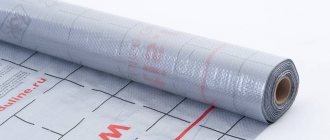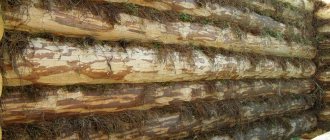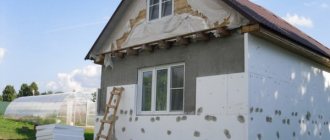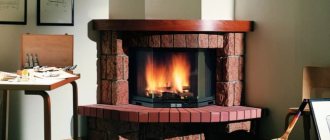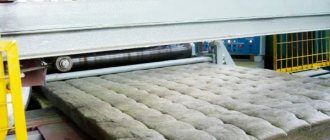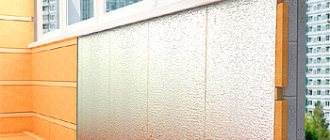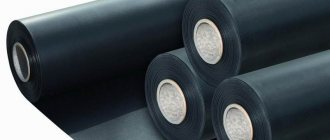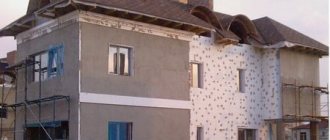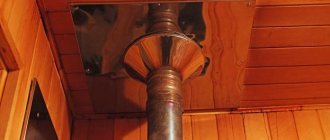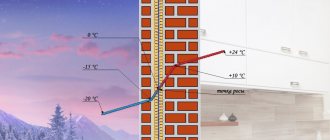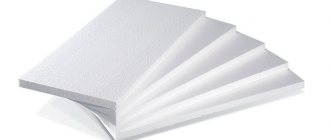The choice of insulation for a frame house is a very important issue. In such houses, the disadvantage is thin walls, and if you choose the wrong thermal insulation material, the house will not retain heat well, it will be cold in the winter, and unbearably hot in the summer. Today we will try to understand what is the best insulation for a frame house by analyzing real people’s reviews.
When starting to explore the Internet for reviews, you need to navigate and understand what kind of material it is and what properties it has. Therefore, first let's get acquainted with the types of thermal insulation materials.
Properties of thermal insulators
So, first of all, the heat insulator must have the following qualities:
- Low heat conductivity;
- Fire safety;
- Low water absorption;
- No or minimal shrinkage;
- Environmentally friendly.
Let's look at them in order.
Low heat conductivity. The lower this indicator, the less heat passes through the insulation. Accordingly, the smaller it is, the better. With low thermal conductivity, the house will be warm in winter and cool in summer. In addition to the fact that this makes the room more comfortable, it also significantly reduces the cost of heating or cooling rooms with electrical appliances.
Water absorption is the ratio of the amount of water that is absorbed by the material to the weight of the heat insulator itself. If moisture gets through the outer walls of the building, the insulation must absorb its excess and prevent it from penetrating inside. This indicator is important because it greatly affects thermal conductivity - moisture conducts heat well. And if this happens during the cold season, the water may freeze completely and turn the insulation into ice, thereby losing all its useful properties.
Fire safety means the strength of resistance to ignition and combustion. There are several GOST categories that meet this indicator.
The best insulation materials, naturally, should be non-flammable.
Shrinkage. Also an important indicator, which should be the most insignificant. If this number is high, after some time after completion of construction the material will settle, holes and cracks will appear between it, which will lead to the appearance of cold bridges and increased heat loss.
Environmentally friendly. During production, some materials are treated with substances harmful to the body, such as formaldehyde. They can damage a person’s respiratory tract, and completely unnoticed. Other materials, such as glass wool, during operation emit very small particles into the air, which also settle on the lungs and bronchi. Such materials are categorically not recommended for insulating children's rooms, and are not very useful for adults.
The best polymer insulation for a frame house
Polymer insulation materials have high thermal insulation properties. When using synthetic products, it is important to provide an effective ventilation system. The following materials attracted the attention of experts.
XPS (extruded polystyrene foam)
Rating: 5.0
In a frame house, it is necessary to insulate not only the walls, but also the floor, interfloor ceilings, and attic. An effective “all-rounder,” according to experts, is extruded polystyrene foam. Boards marked XPS have unique thermal insulation properties. For example, a 5 cm thick panel is comparable in thermal conductivity to a 92.5 cm brick wall. By using conventional polyurethane foam to fill the joints, you can create a monolithic thermal insulation layer. Experts say the only drawback of insulation is moisture resistance. Therefore, you will have to install supply and exhaust ventilation.
Russian homeowners praise the material for its versatility, efficiency, excellent sound insulation capabilities, and easy installation. The disadvantages include the high price.
Advantages
- wide scope of application;
- low thermal conductivity;
- noise insulation properties;
- easy installation.
Flaws
- moisture resistance.
Penoizol
Rating: 4.9
To create a monolithic thermal insulation layer, a multicomponent insulation based on urea resin, orthophosphoric acid and a foaming agent is suitable. The brand name Penoizol has become a household name in our country, which is used for all jelly-like mixtures pumped into cylinders under pressure. The composition fills all pores and voids, setting begins 10 minutes after contact with air, the heat insulator finally polymerizes after 3 days. Experts consider elasticity, high air content (up to 90%), and vapor permeability to be an asset to the material. It is worth considering that insulation strongly absorbs moisture.
Users are satisfied with the combination of economy and efficiency. The disadvantages include the need to use special equipment.
Advantages
- efficiency;
- efficiency;
- quick installation;
- elasticity.
Flaws
- requires special equipment.
Polyurethane foam
Rating: 4.8
In recent years, polyurethane foam has become a serious competitor to penoizol. It is applied by spraying, which allows you to create monolithic thermal insulation. Experts consider resistance to biodestruction, fire resistance, and durability (over 50 years) to be important advantages of the material. Due to the low thermal conductivity (0.019-0.03 W/(m K)), a frame house will be warm in winter and cool in summer. Polyurethane foam is vapor-tight, so you can’t do without a ventilation system. The insulation becomes a bronze medalist in the review.
Builders praise the composition for its high permeability, quick application, and absence of cold bridges. But the cost of polyurethane foam is high, and a special spraying machine is also required.
Advantages
- efficiency;
- high permeability;
- quickly applied;
- there are no cold bridges.
Flaws
- expensive;
- requires special equipment.
Styrofoam
Rating: 4.7
Not a single insulation rating, just like not a single construction site, can do without good old polystyrene foam. It has already been studied inside and out, so a potential buyer can get reliable information about the product. Experts note such advantages of the heat insulator as low price, a wide range of standard sizes, and a variety of densities. Polystyrene foam is suitable both for insulating the walls of a frame house and for constructing a floor or interfloor ceiling. The material can withstand moisture and is not susceptible to biodestruction. The disadvantages of insulation include its smallness and vapor permeability.
Domestic users like foam plastic for its low cost, lightness, and ease of use. But rodents like to make nests in the insulation; even chickens try to peck at the white granules.
Advantages
- low price;
- ease;
- variety of designs;
- resistance to biodestruction.
Flaws
- tinyness;
- rodents are settling in.
Penofol
Rating: 4.6
The combined material penofol closes the category of polymer insulation. It consists of a base (polyethylene foam) and a reflective coating (aluminum foil). In some modifications, both surfaces are covered with foil. The heat insulator can be used either independently or in combination with other insulation materials. Experts call the strengths of the product excellent reflectivity, this applies not only to heat, but to sound, radio signals and some radiation. Penofol is supplied to stores in rolls; they are quite light and compact. The insulation asset should include a variety of types and sizes.
Homeowners value heat insulation for its environmental friendliness, non-flammability, and ease of use. The downside is the high electrical conductivity.
Advantages
- high reflectivity;
- ease;
- ease of installation;
- environmental friendliness.
Flaws
- high electrical conductivity.
Types of insulation
The insulation market is simply huge. The best materials are the most environmentally friendly. And the price, accordingly, of such insulation is higher. But it’s better to pay more once than to save, and then spend years, time, effort, and financial resources on replacing low-quality material.
Perhaps the most common insulation material is mineral wool. It consists of quartz sand and recycled glass, and is a slab filled with a fibrous substance.
It has excellent heat and sound insulation properties, so it is often used for external insulation of a house. It is not affected by fungal diseases.
The downside is that it contains toxic chemicals such as formaldehyde, which have a detrimental effect on the human respiratory tract. Therefore, it is categorically not recommended for use in rooms where children are often present. When the insulation ignites, strong toxic smoke is generated that affects the human respiratory tract.
In addition, mineral wool has hygroscopic properties and shrinks over time.
Polystyrene foam is also quite popular as floor and facade insulation. This material is very cheap, lightweight, and does not require special skills or tools for installation. It almost does not absorb moisture and does not require additional waterproof membranes. The disadvantages are the fragility of the material and a high level of flammability.
Expanded polystyrene is a material made from polystyrene and its derivatives. It has high rates of thermal and waterproofing. It also boasts good fire resistance and resistance to various chemical corrosions. This is a very resistant insulator against mechanical damage and has a fairly long service life.
Polyurethane foam is a sprayed insulation material. Conducts heat and moisture poorly. It differs from other insulation materials in that it eliminates the occurrence of cold bridges, since it has a low density, and closes all the cracks. Excellent fire resistance and preservation of its qualities at extremely high and low temperatures makes it highly sought after.
Ecowool is a fairly environmentally friendly material with good thermal insulation properties. When installing ecowool, there are no connecting seams, so cold bridges will not arise. The negative feature is that this material has high moisture absorption, as well as susceptibility to various fungal diseases. In addition, it will not be possible to install it yourself, since it requires special equipment and professional workers.
Stone wool, on the contrary, does not require special knowledge or equipment for installation, but has fairly good vapor and sound insulation qualities, is not flammable, and is not susceptible to being eaten by rodents and pests. It has a fairly long service life - more than fifty years.
Materials such as expanded clay, cork and peat insulation, sheep wool, fiberboard, and damask are also widely used.
This is all about theory. All these qualities are declared by manufacturers of thermal insulators when releasing products. But it very often happens that people, having heard from a neighbor, friend, colleague that some kind of insulation for frame houses is bad, consider these reviews to be the truth of the first degree, and make their choice not in its favor.
The following are the most common false facts about thermal insulation materials that you should not believe.
The best mineral insulation for a frame house
Mineral insulation materials are in steady demand in frame housing construction. They successfully combine low thermal conductivity, simple installation and an affordable price. The most popular materials today are the following.
Stone wool
Rating: 5.0
Stone wool is gaining more and more fans among professional builders and future homeowners. According to experts, basalt slabs are best suited for insulating frame houses. They are light in weight, so they do not create a destructive effect on the foundation. Installers have no problems cutting and laying the heat insulator. Stone wool meets all the requirements of fire and sanitary-epidemiological services. This type of insulation is sold on the domestic market by different manufacturers. The most popular at the moment are the domestic TechnoNIKOL, the Finnish Paroc and the Danish Rockwool. The material deservedly occupies the highest step of the pedestal.
Users value stone wool for its environmental friendliness, resistance to biodestruction, and durability (more than 50 years).
Advantages
- light weight;
- ease of installation;
- rich assortment;
- environmental friendliness.
Flaws
- not detected.
Glass wool
Rating: 4.9
Back in the days of the Soviet Union, fiberglass-based heat insulators were used to insulate houses. They are still popular today due to their low price and good performance properties. Rodents do not form nests in glass wool, which is important for the province. The material has low thermal conductivity, so it becomes a reliable obstacle to the outflow of heated air from the house. The only inconvenience of glass wool is the presence of small particles of glass fiber that prick when they come into contact with the skin. Therefore, during work, experts advise using personal protective equipment.
Homeowners are satisfied with the effectiveness of the heat insulator, high fire resistance, and resistance to biodestruction. One of the disadvantages is the tendency to absorb moisture.
Advantages
- affordability;
- effective protection against cold;
- fire resistance;
- Rodents do not settle in.
Flaws
- hydro and vapor barrier is required.
Foam glass
Rating: 4.8
The most modern mineral thermal insulation material is foam glass. It is made from silicate glass, coal, coke and soot by foaming at a temperature of about 1000ºC. The product demonstrates exceptional durability (more than 100 years), low thermal conductivity (0.043-0.14 W/(m K)), and increased resistance to moisture. The innovative material is available in different forms; experts consider panels to be the best option for frame house construction. The insulation's assets should include harmlessness to humans, resistance to biodestruction and durability. Over time, foam glass does not cake or deform. Builders do not have any difficulties installing the panels.
Users cite high cost as the only limiting factor for use.
Advantages
- strength and durability;
- low thermal conductivity;
- harmlessness;
- manufacturability.
Flaws
- expensive.
Slag wool
Rating: 4.7
An example of the prudent use of fuel raw materials is slag wool. This insulation is made from waste from the metallurgical industry (slag), so the cost of the final product is not high. At the same time, the material is not inferior in efficiency to more expensive competitors. If previously voids in walls or attic spaces were filled with pieces of slag, today manufacturers offer home builders both roll insulation and mats. Experts emphasize the advantages of slag wool, such as lightness and ease of use. The only inconvenience may be the installation of high-quality vapor barrier.
Users, based on their experience, recommend carefully choosing a manufacturer. There are low quality products on the market.
Advantages
- waste-free technology;
- low price;
- variety of forms;
- ease.
Flaws
- There are low quality insulation materials.
Styrofoam is eaten by rodents
Indeed, rodents really love this material, but they don’t like to feast on it, but to gnaw tunnels out of it. Moreover, this material is not the only insulation they liked. For example, mineral wool is very suitable for mice to make nests. Rodents strive to find a warm shelter, and a frame wooden house is an excellent place for them: they gnaw through the wood and find foam plastic, where they settle.
In Canada, where the frame construction technique originates, they adapted to ward off mice by laying tin plates after the first layer of wood in the frame, which they cannot pass through. If you already have “guests,” you should do this: first, drive them away with an ultrasonic emitter. Secondly, carefully insert a pipe made of vinyl chloride into the passages they made, and on the back side of it begin to release foam from the cylinder.
This way the foam will close the hole.
The best wood-chip insulation for a frame house
Wood insulation is considered the safest for human health. They fit harmoniously into the structure of the frame house. Experts have selected several successful materials.
FLAXAN
Rating: 5.0
One of the most environmentally friendly insulation materials is FLAXAN. This innovative product is created from flax, jute and polyester fibers by thermal bonding. This technology makes the material safe for human health. Experts also note the low thermal conductivity coefficient (0.034 W/(m K)) and versatility of use. Mats can be laid on the floor or ceiling, mounted between walls. The advantages of Flaxan include effective noise absorption and long service life (more than 75 years). When purchasing a material, you should consider its flammability. The heat insulator is the winner of our review.
Russian builders are actively discussing the properties of the new insulation on thematic forums. The high price becomes a deterrent to purchase.
Advantages
- environmental friendliness;
- low thermal conductivity;
- durability;
- noise insulation abilities.
Flaws
- flammability;
- high price.
Ecowool
Rating: 4.9
Ecowool is made from pulp and paper industry waste. It has good thermal insulation properties (0.042 W/(m K)), but the thermal conductivity may vary depending on the humidity of the insulation. Most often in frame house construction, cellulose wool is used to construct floors and floors in bulk, but it is better to use special equipment. Experts point out such a feature of insulation as self-regulation of the microclimate in the house. Ecowool is preferred by people suffering from allergic diseases.
In RuNet, ecowool is praised for its affordable price, effective noise absorption, safety, and resistance to biodestruction. The disadvantages include sensitivity to moisture and high dust content.
Advantages
- health safety;
- good thermal insulation properties;
- self-regulation of microclimate;
- reasonable price.
Flaws
- high moisture absorption;
- a lot of dust.
Cork agglomerate
Rating: 4.8
Many natural insulation materials have a high fire hazard. Cork agglomerate does not have this drawback. The role of the base in the insulation is played by cork oak, the binder component is the resin of this tree. The material is available in the form of sheets with a wide range of thicknesses (from 10 to 100 mm). Therefore, in frame housing construction, the heat insulator can be used in the construction of walls, floors and roofs. Experts highly appreciated such properties of cork as excellent heat and sound insulation abilities and low weight. The material does not attract rodents; fungi and mold do not grow in it. Cork earns Bronze in our review.
In reviews, consumers praise the insulation for its environmental friendliness, durability, fire safety, and moisture resistance. A significant disadvantage of the material is its high price.
Advantages
- environmental friendliness;
- fire safety;
- variety of standard sizes;
- moisture resistance.
Flaws
- expensive.
Fibrolite
Rating: 4.7
Fibrolite is capable of maintaining an optimal microclimate in the house. The heat insulator was released in the 20s of the last century. The developers took wood fibers as a basis, which were held together with cement. Fiberboard is in steady demand among homeowners due to its set of positive characteristics. The insulation has universal qualities; it is suitable both for the construction of walls and floors, and for the construction of a roof. The advantages include resistance to fire, wear, and the ability to withstand high loads. The product is inferior to the leaders in thermal insulation properties (thermal conductivity coefficient 0.063 W/(m K)).
On thematic forums, the material is praised for its good sound absorption and fire resistance.
Advantages
- fire resistance;
- durability;
- versatility;
- noise insulation properties.
Glass wool can only be used for one year
This is a lie that was formed in this way. Construction crews, in an effort to complete the job faster, attach the material to the supports poorly, and sometimes install wall joists at a wider width than required. As a result, the material quickly shrinks, and between the lags there will be gaps through which cold or heat will pass.
There is such statistics - if the total share of cracks is 5%, heat loss will be 25%. Another misconception is that glass wool is not a very moisture-resistant material. In fact, what gives glass wool its absorbency is the improper installation of moisture-resistant membranes. If they are installed correctly, the membranes will remove steam from the cotton wool and will block the path of moisture back.
The importance of using high-quality insulation insulation from steam and wind
In order for mineral wool-based insulation to retain heat as best as possible, they need to be properly equipped with effective protection from wind, steam and moisture.
- Vapor barrier is a reliable barrier against moisture, which is present in any room in the form of vapor. If there is no such protection, the mineral wool will absorb water and become much worse at retaining heat in the house.
- Hydrowind protection. Its operating principle is reminiscent of a windbreaker worn over a sweater. The protective membrane retains warm air well in the room. It consists of several layers that allow it to retain heat and not interfere with the release of water vapor to the outside, as well as prevent atmospheric moisture from entering inside.
- The latest generation of protective membranes can protect the heat insulator and wall structure to the maximum from the negative influences of the external environment. Ordinary polyethylene film does not have such qualities, and it cannot be used in tandem with modern insulation materials. Neglecting this advice will certainly lead to the formation of a thermos effect inside the wall. And due to the lack of ventilation throughout the entire volume of the walls, the insulation will simply deteriorate and will not work.
Polystyrene foam does not insulate the edges of rooms well
This happens when the material is installed incorrectly - it must be placed not in a joint, and clearly fixed. If we talk about insulating the external wall, then to prevent the occurrence of cold bridges, the edges must be fixed with professional foam. You should choose a quality one; you can’t go wrong with the price – it’s only 10% lower than a non-professional one.
If you hear that foam plastic does not insulate well, know that in those cases there is poor quality work by the builders who laid the material without blocking the flow of air masses at the joints. Therefore, if you want to make sure that the slabs will be laid correctly, ask the team to spray foam on the joints.
Expanded clay copes well with its functions if you use it to insulate floors or internal partitions. But it is not suitable as a heat insulator for external walls.
So, let's figure out which insulation is better for a frame house, focusing on people's reviews. It should be remembered that all these cases are special, and that it is impossible to focus on them 100%.
Ecowool often gets wet during use; owners have had to re-install it several times. After home renovations have cost them a considerable amount of wasted money, time and nerves, they advise not to waste money on cheap insulation materials such as ecowool or polystyrene foam, but to invest a large amount of money one time and buy basalt fiber.
It is very difficult to join polystyrene foam so that there are no cold bridges.
This requires real professionals to work, who provide guarantees and are responsible for the work performed. It is very difficult to achieve a perfect joint on your own. The owners believe that it is easier to work with mineral wool, and they can install it themselves without worrying about poor quality of work.
Other forum visitors have left excellent reviews about the foam. Having lived in a house insulated with this material for more than 6 years, they note that it does not allow cold or moisture to pass through, and is environmentally friendly.
Some people prefer stone wool, believing that it has proven itself in the insulation market. An important detail in its installation is to correctly calculate the layer thickness.
Penofol, according to other forum visitors, is an ideal option for insulating a frame house. It is made of foamed polyethylene, which is covered with aluminum foil on top. Thanks to it, heat is reflected, it also provides excellent soundproofing properties, does not shrink, is hygroscopic, and does not transmit radiation. A significant disadvantage is the very high price. Others advise using penofol only in tandem with mineral wool to achieve ideal conditions.
Many people believe that stone wool is the best insulation material. The forum guest noted that he made a calculation in comparison with other materials, although he did not provide this calculation. Another opinion is that stone wool is only suitable for insulating external walls; there is a high probability of condensation forming from the inside.
The point of view was expressed that linen insulation has excellent thermal insulation properties. An additional pleasant point is that such insulation guarantees a microclimate like in a wooden house.
Fire safety of insulation
Many experts call one of the disadvantages of frame construction the high fire hazard of such a house. However, with the right choice of insulation, this disadvantage can be minimized. In accordance with current GOSTs, all building materials are divided into four groups:
G1 – non-flammable; G2 – low-flammability; G3 – moderately flammable; G4 – highly flammable.
Insulation for a frame house must have a high degree of fire safety
Non-flammable and non-flammable insulation materials include: mineral wool, expanded polystyrene, polystyrene foam, hemp mats, glass wool. Easily flammable insulators are: sawdust, polyurethane foam, straw.
How to identify a truly environmentally friendly material among analogues?
To find the best insulation for your home, you need to rely on the following factors:
- Natural composition. The product should be based on natural components and fibers. It is unacceptable for thermal insulation to release toxins or carcinogens. Even the decorative layer used in the future is not able to protect residents from pathogenic chemical fumes. Over time, any finish will become thinner and become permeable; coatings and paints are not able to protect against aggressive components.
- Thermal conductivity. Optimal performance is demonstrated by options made from natural fibers, mainly plant fibers. When choosing which insulation is the most environmentally friendly, you need to pay attention to the heat transfer coefficient: the ideal range is 0.032-0.040 W/m∙K. This range is sufficient to ensure a healthy microclimate in the house.
- Moisture resistance. You should find a sufficiently dense material that can repel liquids, since when wet, the fibers lose their thermal insulation properties and the heat transfer coefficient increases. In conditions of excess humidity, fungi and mold develop, which can cause the spread of pathogenic microorganisms. Natural breathable materials, having absorbed water, dry out with good ventilation and retain all their useful parameters.
- Flammability. This property is especially important in the decoration of buildings; natural raw materials do not contribute to combustion, are vulnerable only when in contact with an open flame and die out when the latter is localized. Environmentally friendly materials, even when burning, do not produce dangerous toxic substances, unlike common insulation materials containing formaldehyde (it releases phenols).
The specialized market offers a rich variety of safe materials; their characteristics will be discussed in more detail below.
Ecowool
This is a breathable insulation, eighty percent consisting of cellulose fiber, simply waste paper. Twelve percent of the total composition is an antiseptic, represented by boric acid, and the last eight percent is borax, which acts as a fire retardant. Ecowool is also classified as an environmentally friendly material.
There are three ways to use insulation:
- Manual. The insulation is fluffed in a large container using a mixer attachment on an electric drill or hammer drill. Specialists have a “gun” device for applying this insulation. Then they are stuffed by hand into the prepared cavities or niches in quantities provided for by the process technology.
- Mechanized or dry. Everything is exactly the same as when manually laying insulation, only for large volumes of work the cellulose fiber is blown in using a compressor or the same gun. This greatly simplifies and speeds up the work process.
- Mechanized wet laying. Ecowool is fluffed up in a special hopper of a blow molding machine, and blown out under pressure, wetted with an aqueous solution through special nozzles. If necessary, an adhesive composition can be added to the cotton wool.
Why should you choose environmentally friendly insulation for your home?
Natural insulation materials, in addition to their non-toxic properties, also have the following positive qualities:
- Excellent thermal conductivity (0.04 – 0.04 W/m•K), and even changes in the degree of humidity do not affect this indicator;
- They contain such a quality as thermal inertia, which will help keep the house cool in the summer and warm in the winter;
- Excellent sound suppression capabilities, and material such as hemp can even reduce carbon dioxide emissions into the environment;
- Installing most environmentally friendly insulation is easy, since the material fits tightly to all structures.
Insulation materials: pros and cons
Thermal insulation for a frame house is made using different materials. When wondering how to choose the best option, you need to analyze the properties of each offer.
Mineral wool
Mineral wool is a general designation for a universal group of thermal insulators that are lightweight, fireproof, vapor permeable and thermally efficient. Special fibers are used as raw materials for production. Mineral wool is sold in the form of rolls or mats.
Mineral wool is a fibrous inorganic insulation material.
Taking into account the type of fibers, the material is classified into the following groups:
- Slag.
- Glass.
- Basalt.
- Stone.
One of the disadvantages of mineral wool is its hygroscopicity. Plates and rolls quickly absorb moisture, losing their initial properties.
Therefore, to protect a frame house from destruction, it is necessary to carry out a set of measures to vapor and waterproof the walls.
Safe ecowool
Ecowool is a cellulose-based insulation material. Those. Paper fiber is used as the raw material, which is completely harmless. The material does not contain components that release toxins and carcinogens during operation. Also, ecowool does not contain dangerous particles of 2-3 microns, which can penetrate into the building even through the vapor barrier layer.
Ecowool is a loose and fibrous building insulating material.
The advantages of insulation include:
- No restrictions on geometric shape and size.
- Effective insulation from street noise due to the tight closing of all voids and cracks.
- Maximum thermal efficiency.
- Compliance with all environmental standards.
- Fighting mold on wood surfaces.
In addition, ecowool does not provoke scabies or an allergic reaction, releases moisture well and is not afraid of waterlogging. Liquid accumulates inside the fibers, but the air inside remains dry.
However, the material is highly flammable, although it prevents the spread of fire. Additional disadvantages include high shrinkage. So, with a density of 50 kg/sq. m it is up to 24%. When using wet-glue spraying technology, parts of ecowool fly apart.
Stone wool
Stone wool is a modern insulation material with high efficiency. It is made from environmentally friendly raw materials of stone origin, which undergo a heat treatment cycle. The main advantages of stone wool:
- Compliance with environmental standards.
- High thermal conductivity coefficient.
- Long service life.
- Improved sound insulation properties.
- Flame resistant.
- Vapor permeability.
Stone wool is one of the most environmentally friendly and reliable heat insulators.
However, stone wool slabs are several times more expensive than other popular insulation materials, and their quality directly depends on compliance with the manufacturing technology.
Glass wool and analogues
Glass wool is similar in properties to basalt wool, but has several differences. It is made from raw materials that are used to make glass and is produced in rolls. The dimensions of the finished product look like this:
- Length - 10 m.
- Width - 1.2 m.
- Thickness - 100 mm.
To insulate walls in frame houses, samples with a density of 15-20 kg/m3 are used. m. If the indicator is lower, the effectiveness of thermal insulation will decrease. Less dense and cheaper materials are suitable only for insulating floor coverings.
Glass wool is an insulating material made from glass fibers.
Before installation work, glass wool is cut into small strips that are 15-25 mm greater than the distance between the posts. Glass wool is well fixed to the frame due to its lightness and long springy fibers in the structure.
However, the insulation is not environmentally friendly, so it is often replaced with stone wool. Roll laying is carried out exclusively with gloves and a respirator.
In addition, glass wool undergoes shrinkage during operation, which leads to the appearance of voids and cold bridges in the frame. The material is characterized by an increased degree of moisture absorption, which reaches 12-15%.
Extruded polystyrene foam
Extruded polystyrene foam is an improved subtype of foam, which is produced through extrusion and has an increased margin of strength, density and water absorption. The positive properties of the material are:
- Easy to install.
- Long service life.
- Compressive strength.
- High thermal insulation efficiency.
- Frost resistance.
- Minimal hygroscopicity.
Expanded polystyrene is a gas-filled material.
EPP is not afraid of biological influences and retains its original properties for several decades.
Negative characteristics of insulation include rapid ignition, insufficient vapor permeability and high cost. In addition, the material is not able to provide high-quality sound insulation.
Real clay
Clay solution is an affordable and high-quality insulation of organic origin. It is used together with straw, and not in its pure form. The advantage of finishing with clay is that there is no need for vapor barrier. The material maintains a comfortable microclimate inside the building, absorbing excess condensation and releasing it if the air space in the house becomes too dry.
For effective thermal insulation, you need to choose clay with an optimal fat content coefficient. If it is low, the solution will not have the necessary adhesion to the surface.
Real clay is a product of natural origin.
Fat content can be determined using a simple method. To do this, you need to roll a small ball and squeeze it between two wooden boards. When cracks appear 50% or more, sand is added to the mixture. A correctly selected composition will disintegrate by only 30%.
The negative point is that different types of clay are found in nature, so the effectiveness of thermal insulation depends on their properties.
PIR insulation
PIR insulation has appeared on sale relatively recently. For its manufacture, complex polymers with increased resistance to biological, thermal and chemical factors are used. Slabs or sandwich panels finished with aluminum foil, kraft paper or bitumen-impregnated fiberglass are available in the market.
PIR insulation is characterized by the following advantages:
- Durability (from 50 years).
- Resistant to fire.
- Effectively repels moisture.
- Good thermal conductivity.
- Light weight.
PIR insulation is a new type of slab insulator.
However, due to a lack of information, the material is not widely disseminated. In addition, it is quite expensive.
Spray polyurethane foam
This insulation has the following positive properties:
- High adhesive abilities. This allows the material to be laid on brick, metal, wood, glass and concrete surfaces. It is securely held on flat or round structures and does not require additional fixation.
- Low delivery costs. You can prepare the working solution yourself at the construction site. Therefore, you will not have to pay for the services of the transport company.
- Light weight. This feature reduces the negative load on the base.
- Resistant to temperature fluctuations. Polyurethane foam can withstand temperature drops or increases to critical levels.
When applying the material, the surface not only becomes insulated, but also becomes dense. 30 seconds after distribution, the solution polymerizes and therefore does not pose a threat to humans or the environment. The insulation is not afraid of the negative effects of chemical reagents.
Sprayed polyurethane foam is a material related to gas-filled plastics.
However, sprayed polyurethane foam is destroyed when exposed to ultraviolet radiation and emits carbon dioxide or carbon monoxide when intensely heated. It is not recommended to use it for insulating roof structures made of metal tiles or corrugated sheets, because in the absence of a ventilation gap, the roofing materials will be destroyed.
Fiberboard (MDVP)
This natural material is widely used in frame construction. It provides effective sound insulation and is suitable for external and internal finishing works. To produce fiberboards, crushed wood chips are used, which are mixed with water and pressed.
The advantages of MDVP are related to:
- Environmental cleanliness and safety.
- Resistant to rot and mold.
- Fire safety.
- Low price.
- Easy to install.
Fiberboard is a sheet material made by hot pressing.
However, reviews from experts mention the low strength of the material and the need for installation in dry weather.
Modern material fiberboard
To make fiberboard insulation, wood shavings are used, which are dried and pressed. Portland cement or magnesium binding salt is added to the feedstock. To protect the material from loss of thermal insulation qualities, it is equipped with a waterproofing coating. Using fiberboard you can process internal floors and walls.
The demand for fiberboard is constantly growing, which is due to its following characteristics:
- Fire resistance. The material contains astringent components that protect it from ignition.
- Resistant to deformation. Wood chips have damping properties, and binder additives maintain the stability of the warm slab.
- High soundproofing characteristics. The fiberboard board protects the room from street noise.
- Full compliance with environmental standards. The material contains no harmful or unsafe impurities.
- Durability. According to manufacturers, fiberboard retains its properties for 50 years.
- Resistant to the destructive effects of moisture. The insulation is not afraid of getting wet and dries quickly.
Fibrolite is a combination of wood fiber and cement.
The disadvantage of fiberboard is its vulnerability to deformation during temperature changes. Also the material is quite expensive.
Wood sawdust
Wood chips are an affordable and easy-to-install insulator. High-quality raw materials can be purchased at woodworking enterprises, where they are positioned as waste.
Sawdust is popular due to its environmental safety, low price, vapor permeability and minimal degree of shrinkage. In addition, they have good thermal insulation characteristics.
Sawdust is a material that finds its application in various fields.
However, when wet, sawdust becomes denser and loses its original properties. Additional disadvantages include rapid combustion and instability to rot and mold.
Liquid floor insulation
The liquid insulation method has recently begun to be used in frame construction. The main binding component is an acrylic composition with ceramic or silicone microspheres. These impurities contribute to the appearance of air layers, which increase the degree of insulation.
Liquid thermal insulation is an innovative technology in construction.
The advantage of liquid insulation is the ability to use it to treat hard-to-reach areas in the frame of the room. This solution is easy to apply and protects the treated coatings from ignition or mechanical stress. At the same time, its service life is limited, and the cost is quite high.
Foam plastic and analogues
Foam plastic is considered the most common insulation material, which became widely used for building houses back in the mid-50s. last century. The material is 98% air, which helps reduce weight and improve thermal insulation qualities.
Foam plastic is a gas-filled cellular insulation material.
Polyfoam has a low cost and at the same time provides high-quality heat and sound insulation. It is easy to install and is resistant to fungi.
However, polystyrene foam can release toxins when heated and can be destroyed by chemicals or ultraviolet rays. Such slabs are not sufficiently vapor permeable and are susceptible to mechanical stress.
Real moss
Moss is a natural insulator with antibacterial and sealing properties. For thermal insulation of frame buildings, sphagnum or cuckoo flax is used.
Real moss is environmentally friendly.
The advantages of moss are its organic origin and environmental safety. The material is inexpensive and has antiseptic characteristics. It is capable of not only accumulating, but also releasing moisture.
However, finding freely available moss is problematic. Under the influence of negative factors, it dries out and loses its initial properties.
Foam glass
The chemical composition of the material resembles ordinary glass. It is produced using the technology of foaming glass raw materials, which makes it possible to obtain a fine-cell structure. You can buy foam glass in granular or slab form.
Foam glass is a material that is a foamed glass mass.
The material is popular due to its high insulation characteristics, versatility and durability. There is information that foam glass remains of high quality for 100 years or more. Applying slabs or granules is quite simple. However, they do not ignite and do not emit carcinogens when heated.
The disadvantages of foam glass are a limited safety margin, high cost and minimal vapor permeability.
Linen mats
Linen mats are another affordable insulator characterized by high heat and sound insulation parameters. Organic fiber not only absorbs, but also releases excess liquid without accumulating condensation. This allows you to carry out work on insulating a frame house without installing a vapor barrier layer.
Linen mats are an affordable insulator.
Of the negative characteristics of linen insulation, only its high cost and vulnerability to rotting stand out.
Slag wool insulation
Another common type of insulation, which is gradually losing its popularity due to the availability of more advanced materials.
This type of insulation has a number of negative qualities that significantly narrow the scope of their application:
- Fragility. The material “breaks” easily, does not retain its shape well and is prone to shrinkage.
- The moisture resistance of slag slabs leaves much to be desired. The slag quickly absorbs water, which is then quite difficult to remove.
The non-ecological nature of the material also affects its application. Some construction teams refuse to work with this type of material.
Slag wool insulation is used for objects with high margins for error and a modest budget. As a rule, these are outbuildings (sheds, garages) or houses where the owners stay in the summer. Laying the material also has its own characteristics, which can not only delay construction, but also become dangerous for workers.
Insulation thickness
It is necessary not only to decide what insulation to cover the walls, floors, roof and ceilings, but also to determine the parameters of the material. The thickness of the layer can vary, which is influenced by the type of thermal insulation. For example, to reduce the intensity of heat loss in a room using sawdust, a frame structure up to 300 mm thick is constructed.
When using polyurethane foam, the value of this parameter decreases. This is due to the extremely low thermal conductivity and the absence of coating seams. This means that a layer of thermal insulation of this type with a thickness of 30-50 mm will cope with its task no worse than large-sized slab and bulk analogues. If the question of how best to insulate a house from the outside is being decided, it is necessary to take into account the climatic zone in which the object is located. In central Russia, it is enough to use an insulating layer with a thickness of 150-300 mm.
